#Angular Dependency Injection
Explore tagged Tumblr posts
Text
#Advanced Dependency Injection Techniques Angular#Angular Dependency Injection#Angular Dependency Injection Best Practices#Dependency Injection in Angular#Optimizing Dependency Injection Angular#top angular development company
0 notes
Text
genuinely, signals & control flow & the inject function have taken angular from being a "meh it has it's uses but it's not great" UI framework to one of my favs in the space. the way you structure components now is so unbelievably different to when i started with it back at like v6 it's like an entirely new framework and honestly it's really fun to use. i'm actually looking forward to new releases since it always opens the door to new and interesting ways of doing something that's easier than before, and i actually want to make UIs with it instead of pining for something else
#i had a ui that i started for a project and that used solidjs#but some of that is annoying and confusing#esp with data fetching#but angular has the same signal concept but with fuckin dependency injection#and it works so seamlessly well together you'd think angular was made for it#surprisingly angular actually has less compiler magic than solidjs lol and i like that#it makes things easier to predict#oug i want to make something for myself using it#oh shit i have an idea actually#maybe i shall .......#lizabeth talkabeth#angular#javascript#typescript
2 notes
·
View notes
Text
java full stack
A Java Full Stack Developer is proficient in both front-end and back-end development, using Java for server-side (backend) programming. Here's a comprehensive guide to becoming a Java Full Stack Developer:
1. Core Java
Fundamentals: Object-Oriented Programming, Data Types, Variables, Arrays, Operators, Control Statements.
Advanced Topics: Exception Handling, Collections Framework, Streams, Lambda Expressions, Multithreading.
2. Front-End Development
HTML: Structure of web pages, Semantic HTML.
CSS: Styling, Flexbox, Grid, Responsive Design.
JavaScript: ES6+, DOM Manipulation, Fetch API, Event Handling.
Frameworks/Libraries:
React: Components, State, Props, Hooks, Context API, Router.
Angular: Modules, Components, Services, Directives, Dependency Injection.
Vue.js: Directives, Components, Vue Router, Vuex for state management.
3. Back-End Development
Java Frameworks:
Spring: Core, Boot, MVC, Data JPA, Security, Rest.
Hibernate: ORM (Object-Relational Mapping) framework.
Building REST APIs: Using Spring Boot to build scalable and maintainable REST APIs.
4. Database Management
SQL Databases: MySQL, PostgreSQL (CRUD operations, Joins, Indexing).
NoSQL Databases: MongoDB (CRUD operations, Aggregation).
5. Version Control/Git
Basic Git commands: clone, pull, push, commit, branch, merge.
Platforms: GitHub, GitLab, Bitbucket.
6. Build Tools
Maven: Dependency management, Project building.
Gradle: Advanced build tool with Groovy-based DSL.
7. Testing
Unit Testing: JUnit, Mockito.
Integration Testing: Using Spring Test.
8. DevOps (Optional but beneficial)
Containerization: Docker (Creating, managing containers).
CI/CD: Jenkins, GitHub Actions.
Cloud Services: AWS, Azure (Basics of deployment).
9. Soft Skills
Problem-Solving: Algorithms and Data Structures.
Communication: Working in teams, Agile/Scrum methodologies.
Project Management: Basic understanding of managing projects and tasks.
Learning Path
Start with Core Java: Master the basics before moving to advanced concepts.
Learn Front-End Basics: HTML, CSS, JavaScript.
Move to Frameworks: Choose one front-end framework (React/Angular/Vue.js).
Back-End Development: Dive into Spring and Hibernate.
Database Knowledge: Learn both SQL and NoSQL databases.
Version Control: Get comfortable with Git.
Testing and DevOps: Understand the basics of testing and deployment.
Resources
Books:
Effective Java by Joshua Bloch.
Java: The Complete Reference by Herbert Schildt.
Head First Java by Kathy Sierra & Bert Bates.
Online Courses:
Coursera, Udemy, Pluralsight (Java, Spring, React/Angular/Vue.js).
FreeCodeCamp, Codecademy (HTML, CSS, JavaScript).
Documentation:
Official documentation for Java, Spring, React, Angular, and Vue.js.
Community and Practice
GitHub: Explore open-source projects.
Stack Overflow: Participate in discussions and problem-solving.
Coding Challenges: LeetCode, HackerRank, CodeWars for practice.
By mastering these areas, you'll be well-equipped to handle the diverse responsibilities of a Java Full Stack Developer.
visit https://www.izeoninnovative.com/izeon/
2 notes
·
View notes
Text
Top 10 Front-End Frameworks and Libraries for 2024
As the web development landscape continues to evolve, staying updated with the latest front-end frameworks and libraries is crucial for any developer. Whether you're a seasoned pro or just starting out, knowing which tools to use can significantly impact your productivity and the quality of your projects. In this post, we’ll explore the top 10 front-end frameworks and libraries that are set to dominate in 2024.
1. React
React remains one of the most popular front-end libraries, known for its simplicity and flexibility.
Key Features of React
Component-Based Architecture: Reusable components make development efficient and manageable.
Virtual DOM: Enhances performance by minimizing direct DOM manipulation.
Strong Community Support: A vast ecosystem of tools, libraries, and tutorials.
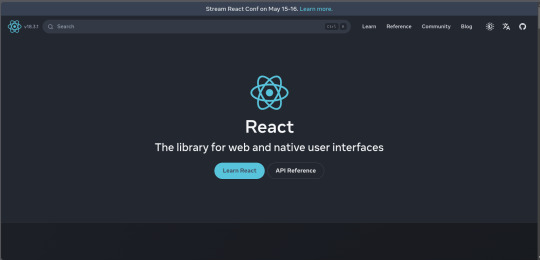
2. Angular
Angular, backed by Google, is a powerful framework for building dynamic single-page applications (SPAs).
Why Choose Angular?
Two-Way Data Binding: Synchronizes data between the model and the view.
Dependency Injection: Improves code maintainability and testability.
Comprehensive Documentation: Extensive resources for learning and troubleshooting.
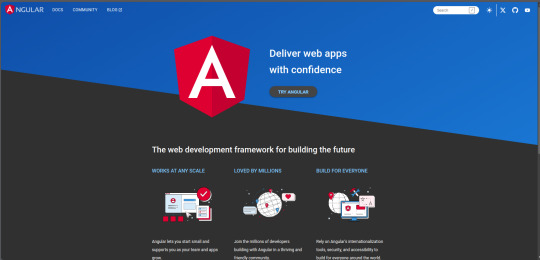
3. Vue.js
Vue.js has gained popularity due to its gentle learning curve and versatility.
Advantages of Vue.js
Reactive Data Binding: Simplifies state management.
Single-File Components: Encapsulate HTML, CSS, and JavaScript in one file.
Flexibility: Can be used for both large-scale and small-scale applications.
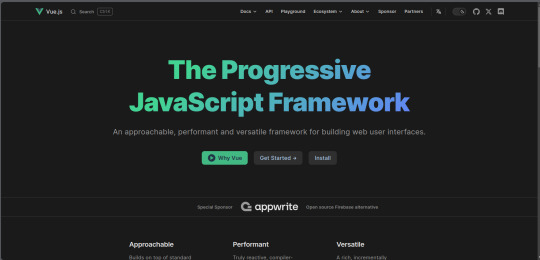
4. Svelte
Svelte is a relatively new player that compiles components into highly efficient vanilla JavaScript at build time.
Svelte’s Standout Features
No Virtual DOM: Directly manipulates the DOM for better performance.
Less Boilerplate: Cleaner code with minimal overhead.
Ease of Use: Intuitive and straightforward syntax.
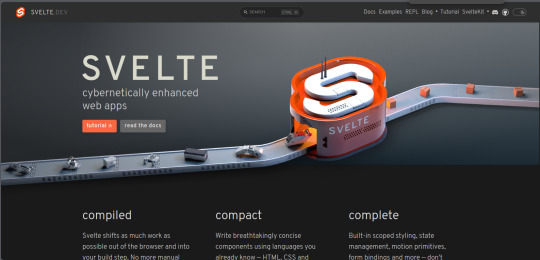
5. Bootstrap
Bootstrap is a front-end framework that provides pre-designed components and a responsive grid system.
Benefits of Using Bootstrap
Responsive Design: Ensures your site looks great on all devices.
Pre-Styled Components: Saves time with ready-to-use UI elements.
Customizable: Easily customize with Sass variables and Bootstrap’s extensive options.
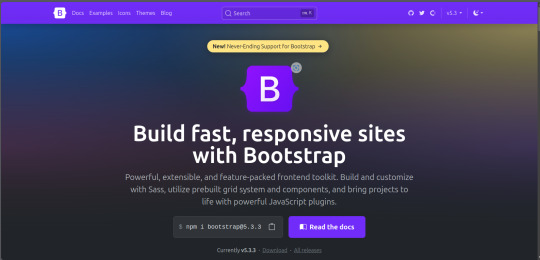
6. Tailwind CSS
Tailwind CSS is a utility-first CSS framework that allows for rapid UI development.
Tailwind CSS Features
Utility-First Approach: Use utility classes directly in your HTML.
Customizable: Extensive configuration options to suit your project’s needs.
Consistency: Enforces a consistent design language across your project.
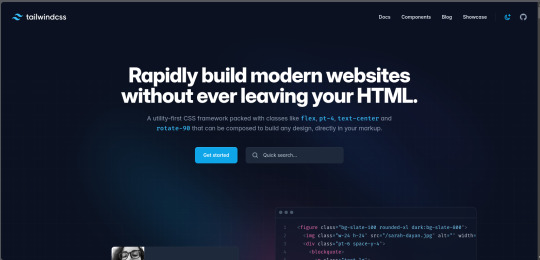
7. Ember.js
Ember.js is a robust framework for building ambitious web applications.
Why Ember.js Stands Out
Convention over Configuration: Reduces the amount of decision-making and boilerplate code.
Strong Routing: Powerful routing capabilities for managing application state.
Productivity: Focuses on developer productivity with built-in best practices.
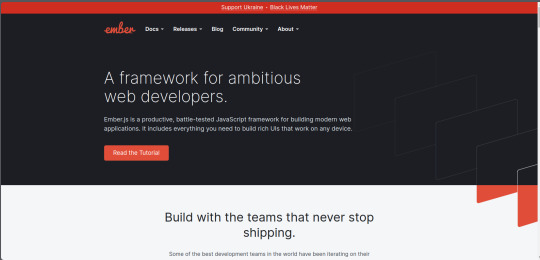
8. Alpine.js
Alpine.js offers a minimal and lightweight way to add interactivity to your websites.
Key Features of Alpine.js
Lightweight: Small footprint with only a few kilobytes.
Declarative Syntax: Similar to Vue.js, making it easy to understand and implement.
Ease of Integration: Can be easily integrated into existing projects.
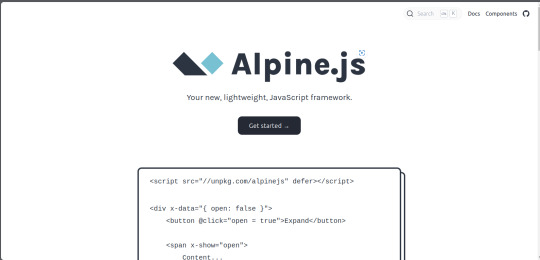
9. Next.js
Next.js is a popular React framework that enables server-side rendering and static site generation.
Benefits of Using Next.js
Server-Side Rendering (SSR): Improves performance and SEO by rendering pages on the server.
Static Site Generation (SSG): Pre-renders pages at build time for fast load times.
API Routes: Allows you to create API endpoints within your application.
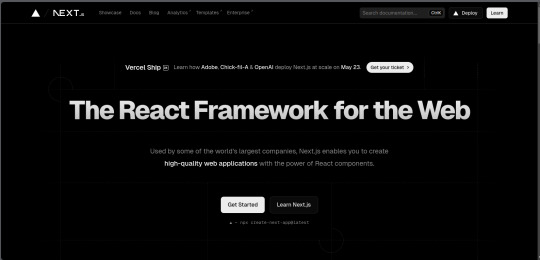
10. Lit
Lit is a simple library for building fast, lightweight web components.
Advantages of Lit
Web Components: Embraces the web components standard for reusable, encapsulated HTML elements.
Performance: Lightweight and highly performant.
Simple API: Easy to learn and use with a minimal API surface.
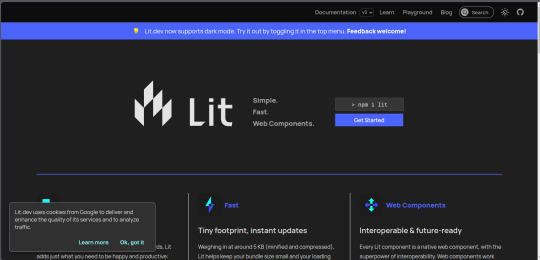
Conclusion
Choosing the right front-end framework or library can significantly impact your workflow and the quality of your projects. Whether you prefer the flexibility of React, the structure of Angular, or the simplicity of Svelte, there's a tool out there to suit your needs.
Final Tips for Selecting a Framework or Library
Project Requirements: Consider the specific needs of your project.
Community and Support: Look for frameworks with strong community support and documentation.
Learning Curve: Choose a tool that matches your current skill level and the time you have available to learn.
By staying informed about the latest tools and trends, you can ensure that your skills remain relevant and that you can deliver the best possible results in your projects. Happy coding!
Remember, the best tool is the one that helps you get the job done efficiently and effectively. So, dive into these frameworks and libraries, and take your front-end development skills to the next level!
Share Your Thoughts
I'm curious to know your thoughts on these front-end frameworks and libraries. Have you used any of them in your projects? Which one is your favorite, and why? Share your experiences and insights in the comments below.👇
2 notes
·
View notes
Text
Everything to know about Vitamin -D
First of all, we should know the basics of vitamins. There are two groups of vitamins depending on the solubility.
One is Fat soluble and other is water soluble. In fat soluble group falls Vitamin A, D, E & K. In water soluble group falls Vitamin B complex & Vitamin C. vitamin D test cost
Vitamin D is synthesized in our body which involves three major steps at three different organs. In the first step, the primary form of Vitamin D is synthesized under the skin, when UV rays fall on the skin.
One can get UV rays through sunlight with the early morning sunlight exposure. The second step occurs at Liver. 25-hydroxy cholecalciferol is synthesized in the liver by the process of hydroxylation which is still not an active form. vitamin D test cost
The active form of vitamin D i.e. 1,25-cholecalciferol is synthesized in the kidney. This is the active form of vitamin D,it is also called as Vitamin D3/ Calcitriol.
So, to be precise, Vitamin D synthesis starts at the skin and ends at the kidney via liver. So, any condition which affects these three organ systems, will also affects vitamin D synthesis. vitamin D test cost
Previously it was assumed that function of Vitamin D is absorption of calcium. But over the period it has been proved that it is not the only function, Vit.D plays important role in functioning of Musculoskeletal system, Skin, Neurological system, Cardiovascular system.
Normal level of Vitamin D3 is above 30ng/ml. If it is above 100 ng/ml, it is called as hypervitaminosis. vitamin D test cost
So, Vitamin D3 level has to be maintained between 30-100ng/ml. In children Vitamin D3 deficiency presents with Rickets which presents with bone pain, angular deformities of the extremities (Genu valgum, cubitus varus, coxa vara).
If detected timely, it can be corrected with Vitamin D3 supplements. In adults, Vitamin D3 deficiency may present with many musculoskeletal symptoms like myalgia, recurrent body ache, early fatigue, fractures with trivial injury.
Long standing vitaminD3 deficiency leads to osteoporosis which means decreased bone density. vitamin D test cost
It’s ironic that though we live in India which is a tropical country with ample amount of sunlight exposure throughout the year, still a large no. of the Indian population is suffering from Vitamin D3 deficiency. vitamin D test cost
The important cause for this is Sedentary lifestyle & dietary habits. To correct vitamin D3 deficiency, lifestyle modification, healthy dietary habits, and avoiding junk food also play a vital role.
Signs of Vitamin D Deficiency
Bone Pain: Chronic musculoskeletal pain, especially in the back, hips, and legs, can be a sign of Vitamin D deficiency.
Frequent Infections: Since Vitamin D is involved in immune function, low levels may increase susceptibility to infections. vitamin D test cost
Fatigue: Persistent fatigue and low energy levels could be indicative of Vitamin D deficiency.
Mood Changes: Depression, anxiety, and irritability may be linked to insufficient Vitamin D. vitamin D test cost
Impaired Wound Healing: Slow healing of wounds and frequent infections may occur due to compromised immune function.
For correction of Vitamin D3 levels, there are different formulations available like Injectables, capsules, sachets, solutions. vitamin D test cost
Depending on the level of vitamin D3, dosage and duration of treatment has to be decided. One need to consult Orthopaedic doctor in Baner to correct vitamin d3 levels and associated conditions with it.
Vitamin D is not just a vitamin; it’s a vital hormone that influences numerous aspects of health and well-being. From supporting bone health to bolstering the immune system and regulating mood, its impact on the body is profound.
While sunlight remains the primary source, supplementation and dietary adjustments can help maintain optimal levels, especially in populations at risk of deficiency. vitamin D test cost
By understanding the importance of Vitamin D and taking steps to ensure adequate intake, you can unlock its full potential and promote overall health and vitality.
3 notes
·
View notes
Text
Frontend Frameworks for Web Development

Frontend Frameworks for Web Development, creating captivating and user-friendly websites and web applications is essential for businesses to thrive. With the increasing demand for dynamic and interactive web experiences, frontend development has become more crucial than ever.
To meet these demands efficiently, developers rely on frontend frameworks, which streamline the development process and enhance productivity.
In this comprehensive guide, we'll explore the world of frontend frameworks for web development, covering everything from key factors to consider when choosing a framework to the top options available in India.
Overview of Frontend Frameworks for Web Development
Frontend frameworks are collections of pre-written code, libraries, and tools that expedite the process of building user interfaces for websites and web applications.
These frameworks provide developers with a structured approach to frontend development, offering ready-made components, templates, and utilities to streamline common tasks.
By leveraging frontend frameworks, developers can achieve consistency, maintainability, and scalability in their projects while focusing more on functionality and user experience.
These frameworks often follow the principles of modularization and component-based architecture, facilitating code reuse and making development more efficient.
Key Factors to Consider in a Frontend Frameworks for Web Development
When choosing a frontend framework for web development, several key factors should be considered:
Community Support: Opt for frameworks with active and robust communities. A strong community ensures ongoing support, frequent updates, and a wealth of resources such as documentation, tutorials, and plugins.
Performance: Evaluate the performance metrics of the framework, including page load times, rendering speed, and resource utilization. A lightweight and efficient framework can significantly impact the user experience.
Flexibility and Customization: Assess the framework's flexibility in accommodating project requirements and its customization options. Look for frameworks that allow developers to tailor components and styles to suit specific design needs.
Learning Curve: Consider the learning curve associated with the framework, especially if you're working with a team of developers with varying skill levels. Choose a framework that aligns with your team's expertise and resources.
Compatibility and Browser Support: Ensure that the framework is compatible with a wide range of browsers and devices, particularly if your target audience includes users with diverse preferences and devices.
Updates and Maintenance: Check the framework's update frequency and long-term maintenance plans. Regular updates and proactive maintenance are essential for addressing security vulnerabilities and compatibility issues.
7 Best Frontend Frameworks for Web Development in India
Now, let's explore some of the top Frontend Frameworks for Web Development widely used by developers in India:
React.js: Developed by Facebook, React.js is a popular JavaScript library for building user interfaces. It emphasizes component-based architecture and virtual DOM for efficient rendering. React's ecosystem includes tools like React Router for routing and Redux for state management.
Angular: Backed by Google, Angular is a comprehensive frontend framework for building robust web applications. It provides features such as two-way data binding, dependency injection, and modular development. Angular offers a full-fledged ecosystem with Angular CLI for project scaffolding and Angular Material for UI components.
Vue.js: Vue.js is an advanced JavaScript framework known for its simplicity and flexibility. It allows developers to incrementally adopt its features and integrate it into existing projects easily. Vue.js offers reactive data binding, virtual DOM, and a rich ecosystem of plugins and components.
Bootstrap: Bootstrap is a popular CSS framework for building responsive and mobile-first websites. It provides a grid system, pre-styled components, and responsive utilities, allowing developers to create sleek and consistent designs quickly. Bootstrap is highly customizable and offers extensive documentation and community support.
Svelte: Svelte is a relatively new frontend framework that focuses on compiling components at build time rather than runtime. This approach results in highly optimized and lightweight web applications. Svelte's simplicity and performance make it an attractive choice for developers seeking efficiency and speed.
Tailwind CSS: Tailwind CSS is a utility-first CSS framework that provides a set of low-level utility classes for building custom designs. It offers a highly customizable and expressive approach to styling, enabling developers to create unique and responsive interfaces without writing custom CSS. Tailwind CSS is gaining popularity for its developer-friendly workflow and rapid prototyping capabilities.
Foundation: Foundation is a responsive front-end framework developed by ZURB, known for its modular and customizable nature. It offers a comprehensive set of CSS and JavaScript components, as well as a robust grid system and a variety of UI elements. Foundation is well-suited for building modern and accessible web projects.
Conclusion for Web Development
Choosing the right Frontend Frameworks for Web Development is crucial to the success of your website development. Consider factors such as community support, performance, flexibility, and compatibility when evaluating different frameworks. Each framework has its strengths and weaknesses, so assess your project requirements and development preferences carefully before making a decision.
Whether you opt for React.js, Angular, Vue.js, or any other frontend framework, prioritize learning and mastering the chosen tool to maximize its potential and deliver exceptional web experiences. Keep abreast of new developments, best practices, and emerging trends in frontend development to stay ahead in this ever-evolving field.
FAQs for Web Development
Q: Which frontend framework is best for beginners?
A: Vue.js and React.js are often recommended for beginners due to their relatively gentle learning curves and extensive documentation.
Q: How do I choose between Angular and React for my project?
A: Consider factors such as project requirements, team expertise, and ecosystem preferences. Angular offers a comprehensive solution with built-in features, while React provides more flexibility and a vibrant ecosystem.
Q: Are frontend frameworks necessary for web development?
A: While not strictly necessary, frontend frameworks greatly simplify and expedite the web development process, especially for complex and dynamic projects. They provide structure, consistency, and efficiency, ultimately enhancing productivity and user experience.
Q: Can I use multiple frontend frameworks in the same project?
A: While technically possible, using multiple frontend frameworks in the same project can lead to complexity, conflicts, and maintenance challenges. It's generally advisable to stick to a single framework to maintain code consistency and streamline development.
More Details
Email: [email protected]
Website: https://censoware.com/
#web development#website development#software development#web developers#pythonprogramming#phpdeveloper#javascriptdeveloper#mern stack development#mobile app development
2 notes
·
View notes
Text
Angular Interview Questions and Answers: Part 13
This is the 13th part of the Angular Interview Questions and Answers Series. In this part we will discuss the answers of the following Angular Questions:
Q149. What is Dependency Injection in Angular? What are the advantages of Dependency Injection? Q150. What are the different components of the Angular Dependency Injection Framework? How does dependency injection work in Angular? Q151. What do you mean by Hierarchical Dependency Injection in Angular? Q152. What is an Injector Tree? What are the different types of Injector Hierarchies in Angular? Q153. What is ModuleInjector Tree in Angular? How can you register services at the module level? Q154. What is the use of @Injectable decorator in Angular? What is root-level Service Registration? Q155. What is the root Module Injector in Angular? Q156. What is PlatforInjector in Angular? What is the difference between platform vs. root injector? Q157. What is the NullInjector in Angular? Q158. What is the difference between the @Injectable() vs @ngModule() service injector? Q159. What is the difference between Lazy Loaded vs Eagerly Loded service provider scope?
Please visit the following link for the Answers of the above Angular Interview Questions:
#angularpart13 #angularinterviewquestions #mostfrequentlyaskedangularquestions #angularfresherinterviewquestions #angularexperiencedinterviewquestions #commonangularinterviewquestions #angularinterview2023 #techpointfundamentals #techpointfunda #techpoint #crackjob #techpointblog
#angularpart13#angularinterviewquestions#mostfrequentlyaskedangularquestions#angularfresherinterviewquestions#techpointfundamentals#techpointfunda#techpoint#crackjob
2 notes
·
View notes
Text
Building Scalable Web Applications with ASP.NET Core
In the ever-evolving world of web development, building applications that can grow with user demand is critical. ASP.NET Core, Microsoft’s powerful open-source framework, is trusted by developers worldwide to create high-performance, scalable web solutions. To gain hands-on expertise in this robust framework, consider enrolling at the Best DotNet Training Institute in Hyderabad, Kukatpally, KPHB, where expert instructors and practical sessions help turn learners into professionals.
Why Choose ASP.NET Core for Scalable Apps?
ASP.NET Core stands out due to its modern architecture and performance-first approach. It’s lightweight, modular, and built from the ground up to support cloud-based and enterprise-level applications.
Cross-Platform Development: Write once, deploy anywhere—Windows, Linux, or macOS.
An efficient web framework: It's one of the fastest frameworks on the market.
Microservices Ready: Easily build and manage microservices with Docker and Kubernetes support.
Core Features Supporting Scalability
Asynchronous Programming
ASP.NET Core's support for asynchronous programming allows applications to handle multiple requests efficiently, minimizing latency even under high loads.
Built-in Dependency Injection
This helps manage complex application dependencies cleanly, allowing better control and scalability.
Middleware Pipeline
Customize the request-response pipeline to ensure efficient data handling, performance tuning, and modular control.
Integration with Modern Tools and Cloud Platforms
ASP.NET Core seamlessly integrates with:
Azure Cloud Services for flexible deployment and scalability.
Entity Framework Core for efficient data access.
SignalR for real-time web functionalities.
Front-end libraries like Angular and React for building full-stack applications.
These integrations empower developers to build feature-rich, cloud-native applications that scale as user demand grows.
Community Support and Continued Growth
ASP.NET Core benefits from a strong global developer community and regular updates from Microsoft. You’ll find thousands of tutorials, forums, and open-source projects that accelerate your learning and problem-solving.
Conclusion
Developing scalable web applications is no longer optional-it's a fundamental requirement. ASP.NET Core offers the flexibility, performance, and tools needed to build apps that grow with your business. To truly master it and launch a rewarding development career, consider training with Monopoly IT Solutions, where real-world projects, expert trainers, and career guidance await.
#best dotnet training in hyderabad#best dotnet training in kukatpally#best dotnet training in kphb#best .net full stack training
0 notes
Text
Why Java Is Still the King in 2025—and How Cyberinfomines Makes You Job-Ready with It

1. Java in 2025: Still Relevant, Still Dominating Despite the rise of new languages like Python, Go, and Rust, Java is far from dead—it’s actually thriving.
In 2025, Java powers:
40%+ of enterprise backend systems
90% of Android apps
Global banking & fintech infrastructures
E-commerce giants like Amazon, Flipkart & Alibaba
Microservices and cloud-native platforms using Spring Boot
Java is reliable, scalable, and highly in demand. But just learning syntax won’t get you hired. You need hands-on experience, framework expertise, and the ability to solve real-world problems.
That’s exactly what Cyberinfomines delivers.
2. The Problem: Why Most Java Learners Don’t Get Jobs Many students learn Java but still fail to land jobs. Why?
❌ They focus only on theory ❌ They memorize code, don’t build projects ❌ No real understanding of frameworks like Spring Boot ❌ Can’t explain their code in interviews ❌ Lack of problem-solving or debugging skills
That’s where Cyberinfomines’ Training changes the game—we teach Java like it’s used in real companies.
3. How Cyberinfomines Bridges the Gap At Cyberinfomines, we:
✅ Teach Core + Advanced Java with daily coding tasks ✅ Use real-world problem statements (not academic ones) ✅ Give exposure to tools like IntelliJ, Git, Maven ✅ Build full-stack projects using Spring Boot + MySQL ✅ Run mock interviews and HR prep ✅ Help you create a Java portfolio for recruiters
And yes—placement support is part of the package.
4. Java Course Curriculum: Built for the Real World Core Java
Data types, loops, arrays, OOP principles
Exception handling, packages, constructors
File handling & multithreading
Classes vs Interfaces
String manipulation & memory management
Advanced Java
JDBC (Java Database Connectivity)
Servlet Lifecycle
JSP (Java Server Pages)
HTTP Requests & Responses
MVC Design Pattern
Spring Framework + Spring Boot
Dependency Injection & Beans
Spring Data JPA
RESTful API Creation
Security & authentication
Connecting with front-end apps (React/Angular)
Tools Covered
IntelliJ IDEA
Eclipse
Postman
Git & GitHub
MySQL & Hibernate
Live Projects
Library Management System
Employee Leave Tracker
E-Commerce REST API
Blog App with full CRUD
Interview Preparation
DSA using Java
Java-based coding problems
100+ mock interview questions
HR round preparation
Resume writing workshops
5. Who Should Learn Java in 2025? You should choose Java if you are:
A fresher who wants a strong foundation
A non-tech graduate looking to switch to IT
A teacher/trainer who wants to upskill
A professional aiming for backend roles
Someone interested in Android development
A student looking to crack placement drives or government IT jobs
6. Real Success Stories from Our Java Learners
Amit (BSc Graduate) – Now working as a Java backend developer at an IT firm in Pune. Built his confidence with live projects and mock tests.
Pooja (Mechanical Engineer) – Switched from core to IT after completing Cyberinfomines’ Java program. Cracked TCS with flying colors.
Rahul (Dropout) – Didn’t finish college but now works remotely as a freelance Spring Boot developer for a US-based startup.
Every story started with zero coding experience. They ended with real jobs.
7. Top Java Careers in 2025 & Salary Trends In-demand roles include:
Java Backend Developer
Full Stack Developer (Java + React)
Android Developer (Java)
Spring Boot Microservices Architect
QA Automation with Java + Selenium
API Developer (Spring + REST)
Starting salary: ₹4.5 – ₹8 LPA (for freshers with strong skills) Mid-level: ₹10 – ₹20 LPA Freelancers: ₹1,000 – ₹2,500/hour
Java is stable, scalable, and pays well.
8. Certifications, Tools & Practical Add-Ons After training, you’ll earn:
Cyberinfomines Java Developer Certificate
Portfolio with at least 3 GitHub-hosted projects
Proficiency in IntelliJ, Maven, Git, MySQL
Resume aligned with Java job descriptions
Interview recordings and performance feedback
9. What Makes Cyberinfomines Java Training Different
✔ Human mentorship, not just videos ✔ Doubt sessions + code reviews ✔ Classes in Hindi & English ✔ Live assignments + evaluation ✔ Placement-oriented approach ✔ No-nonsense teaching. Only what’s needed for jobs.
We focus on you becoming employable, not just completing a course.
10. Final Words: Code Your Future with Confidence Java in 2025 isn’t just relevant—it’s crucial.
And with Cyberinfomines, you don’t just learn Java.
You learn how to:
Solve real problems
Write clean, scalable code
Work like a developer
Get hired faster
Whether you’re starting fresh or switching paths, our Java course gives you the skills and confidence you need to build a future-proof career.
📞 Have questions? Want to get started?
Contact us today: 📧 [email protected] 📞 +91-8587000904-905, 9643424141 🌐 Visit: www.cyberinfomines.com
0 notes
Text
Top Front-End Frameworks Web Development Companies Use in 2025
The front-end landscape continues to evolve rapidly, with user expectations pushing web applications to be faster, more interactive, and visually seamless across devices. In 2025, choosing the right front-end framework is a strategic decision that impacts performance, scalability, and developer efficiency. That’s why every seasoned Web Development Company evaluates and adopts frameworks that align with both technical requirements and user experience goals.
From enterprise-grade portals to dynamic eCommerce platforms and progressive web apps, front-end frameworks power the interface users directly engage with. Below, we explore the top front-end frameworks dominating the web development space in 2025—and why agencies rely on them.
1. React.js
Still the industry favorite in 2025, React continues to dominate front-end development. Backed by Meta (Facebook), React is a component-based JavaScript library for building fast, interactive UIs.
Why companies use it:
Strong community support and third-party integrations
Highly reusable components and custom hooks
Great compatibility with backends and headless CMS
Ideal for SPAs, PWAs, and enterprise dashboards
Bonus: React also powers frameworks like Next.js, which brings SSR (server-side rendering), static site generation, and improved SEO to the React ecosystem.
2. Vue.js
Vue has steadily gained popularity thanks to its simplicity, performance, and developer-friendly design. In 2025, Vue 3—with its Composition API and improved TypeScript support—makes it a strong choice for mid-scale projects and agile teams.
Why companies use it:
Lightweight and easy to learn
Reactive two-way data binding
Great for progressive migration in legacy apps
Vue CLI and ecosystem tools enhance productivity
Ideal for: SaaS applications, admin panels, and interactive marketing sites.
3. Next.js
Although technically a framework built on React, Next.js deserves a separate mention due to its dominance in building high-performance, SEO-friendly web applications.
Why companies use it:
Built-in support for SSR, SSG, and ISR
Seamless routing and dynamic page generation
API routes for backend-like features
Excellent for headless CMS integrations and eCommerce
Trend in 2025: Many Jamstack-based websites now rely on Next.js paired with GraphQL and CMS tools like Sanity or Strapi.
4. Svelte & SvelteKit
Svelte takes a unique approach—it compiles your code at build time, eliminating the need for a virtual DOM. The result? Ultra-fast and lightweight apps with excellent runtime performance.
Why companies use it:
Less boilerplate code, clean syntax
Faster load times and smaller bundle sizes
SvelteKit brings routing, server-side rendering, and file-based API integration
Use case: Startups looking for speed, performance, and simplicity in modern SPAs.
5. Angular
Angular, maintained by Google, remains a staple in enterprise web development in 2025. While it's more complex and opinionated than React or Vue, it provides everything out of the box—from routing and state management to HTTP clients and dependency injection.
Why companies use it:
Built-in tooling for testing, forms, and HTTP
TypeScript-first architecture
Great for large-scale, complex applications
Best for: Enterprise-level apps with large teams and strict development protocols.
6. Remix
Remix is a relatively new but rapidly adopted React framework focusing on performance, nested routing, and better use of the browser’s native capabilities. In 2025, many agencies use Remix for building dynamic, data-driven apps with great SEO and loading speed.
Why companies use it:
Streamlined data loading methods
Improved error handling
Great SEO out of the box
Works well with modern APIs and backends
Gaining ground: Especially among React teams seeking an alternative to Next.js.
7. Astro
Astro is one of the rising stars in front-end frameworks as of 2025. It allows developers to ship zero JavaScript by default and only hydrate interactive components as needed. It supports multiple frameworks (React, Vue, Svelte) in the same project.
Why companies use it:
Partial hydration = faster sites
Ideal for content-heavy sites and blogs
Headless CMS integration is seamless
Perfect for: Static sites, marketing pages, and performance-first websites.
Final Thoughts
The front-end frameworks used in 2025 reflect a shift toward performance, flexibility, SEO-friendliness, and developer ergonomics. Whether you're building a blazing-fast content site or a complex dashboard, the right framework accelerates development, improves UX, and ensures scalability.
Partnering with a forward-thinking Web Development Company ensures that your project is built using the best-suited technology stack. These experts evaluate your business needs, future scalability, SEO requirements, and user expectations to recommend the optimal front-end framework—ensuring your digital product doesn’t just look good, but performs exceptionally.
0 notes
Text
#Angular advanced navigation control#Angular application server-side rendering#Angular component structure#Angular Dependency Injection#Angular form validation techniques#Angular UI component library#angular web development company#best angular development company#hire dedicated angular developer#Hire nearshore angular developer#top angular development company
0 notes
Text
A Step-by-Step Guide to Hiring Angular Developers for Your Startup

Angular is frequently the preferred option for companies looking to develop online applications that are responsive, scalable, and quick. Because of its component-based architecture and TypeScript foundation, Angular—which was created and maintained by Google—is perfect for complicated applications requiring great performance.
However, you need more than just the proper framework to fully utilize Angular; you also need the right people. This useful advice will assist you in hiring Angular engineers who share the goals and pace of your firm.
Building Your Frontend Right: How Startups Can Efficiently Hire Angular Talent
Understand Why Angular Fits Your Startup
Verify if Angular is a good fit for your project before hiring. Angular is great for scalable systems, enterprise dashboards, and single-page applications (SPAs). Dependency injection and two-way data binding are two of its built-in features that help speed up development if you're creating an MVP or anything that will expand rapidly.
Hiring for the correct technical stack and future requirements is ensured when you have a clear understanding of why you need to hire Angular developers.
Define the Skills You Need
Over time, angular has changed dramatically. Every version of Angular, from AngularJS to Angular 15+, has included new functionality and syntax. Effective hiring of Angular developers requires applicants who:
Know JavaScript and TypeScript well.
Understand how to integrate RESTful APIs.
Able to use technologies like RxJS or NgRx to handle state
Understand testing frameworks such as Karma or Jasmine
Be familiar with cross-browser compatibility and responsive design.
Knowing which abilities are most important helps you narrow down your search, even though you don't always need someone who has all the answers.
Tap Into the Right Hiring Channels
Examine both conventional and contemporary hiring methods to identify the best applicants. LinkedIn, GitHub portfolios, and tech-focused job forums are all excellent starting points. However, working with an IT staffing agency can be a wise choice for companies with constrained bandwidth.
These organizations assess applicants beforehand and frequently have access to specialized Angular talent around the world. Actually, a lot of tech organizations use staffing agencies to speed up onboarding and minimise hiring friction.
Evaluate Remote Options
Finding skilled local developers within their budget is a common challenge for startups. Both issues can be resolved by choosing to hire remote talent and broadening your reach. With the correct tools and communication techniques, remote Angular devs may be just as productive, if not more so.
Nowadays, a lot of software organizations prioritize remote work since it allows them to access a global talent pool without sacrificing quality.
Use a Practical Interview Process
Don't take the whiteboard tests. Instead, concentrate on real-time coding challenges and portfolio reviews. Examine the candidate's abilities to solve problems, write clean code, and be familiar with version control systems like Git. During the interview, request that applicants use Angular to construct or describe minor features.
Remember to evaluate their communication abilities as well, particularly if you are hiring from a distance. Working together is essential for early-stage startups.
Onboard With a Growth Mindset
Make sure when you hire software developers they are successful. Establish your IT stack and project objectives, write clear onboarding documents, and plan frequent check-ins. Provide access to courses or Angular community events to promote lifelong learning.
Hiring is crucial, but so is retention. The likelihood of a supported developer sticking around and expanding with your firm is higher.
Closing Remarks
Making the correct hires may make or destroy your business while you're growing quickly. You can hire Angular developers that will genuinely contribute to the long-term success of your firm by emphasizing role clarity, reaching out to talent around the world, and utilizing practical ways to assess applicants.
For today's high-growth tech organizations, investing in Angular knowledge is a smart choice, whether done directly or through an IT staffing agency.
0 notes
Text
The Future of Front-End Development: Technologies, Trends, and Services in 2025
Front-end development plays a crucial role in how users interact with websites and applications. The user experience (UX), speed, and responsiveness of a website all depend on how well the front end is developed. As technology evolves, businesses need to stay ahead by adopting modern front end development technologies and ensuring seamless experiences across devices.
With growing competition in the digital space, companies are also investing in front end development services to create high-performing, visually appealing, and user-friendly applications. This article explores the latest technologies, trends, and services shaping the future of front-end development.
1. What is Front-End Development?
Front-end development focuses on the visual and interactive aspects of a website or web application. It includes everything a user sees and interacts with, such as navigation menus, buttons, animations, and layout structures.
Key Responsibilities of Front-End Developers:
Writing clean, efficient, and responsive code.
Ensuring seamless cross-browser compatibility.
Optimizing websites for faster load times and better performance.
Creating accessible and user-friendly interfaces.
Integrating with backend APIs for smooth data retrieval.
To build fast and engaging user interfaces, developers rely on modern front end development technologies that simplify coding, enhance performance, and improve scalability.
2. Latest Front-End Development Technologies in 2025
With new frameworks, libraries, and tools emerging, front-end development is continuously evolving. Here are some of the best technologies shaping the front end in 2025.
A) Front-End Programming Languages
1. JavaScript (JS)
JavaScript remains the dominant language for front-end development, powering interactive and dynamic web applications. With the rise of frameworks like React, Vue, and Angular, JavaScript continues to be at the core of modern web development.
2. TypeScript
TypeScript, a strongly-typed superset of JavaScript, is becoming increasingly popular due to its ability to reduce errors and improve code maintainability. More developers are adopting TypeScript for large-scale applications.
3. WebAssembly (WASM)
WebAssembly allows developers to run high-performance applications in web browsers using languages like C++ and Rust. It is revolutionizing front-end development by enabling faster execution of complex applications.
B) Best Front-End Frameworks and Libraries
4. React.js
Developed by Meta, React remains one of the most widely used front-end libraries. Its component-based architecture, virtual DOM, and support for server-side rendering (SSR) make it ideal for building fast and scalable web applications.
5. Vue.js
Vue is a lightweight yet powerful framework known for its ease of use and flexibility. With Vue 4 expected to launch soon, its improvements in performance and modularity make it a great choice for progressive web applications (PWAs).
6. Angular
Maintained by Google, Angular is a feature-rich front-end framework best suited for enterprise-grade applications. It offers built-in solutions for routing, form validation, and dependency injection, making it ideal for complex projects.
7. Svelte
Svelte is gaining popularity due to its lightweight approach — it compiles components at build time, eliminating the need for a virtual DOM and resulting in faster execution and reduced file sizes.
C) UI/UX and Styling Technologies
8. Tailwind CSS
Tailwind CSS is a utility-first CSS framework that simplifies custom styling. It allows developers to build beautiful interfaces without writing large CSS files, making it a preferred choice for modern UI development.
9. Material UI (MUI)
Based on Google’s Material Design, MUI provides a collection of pre-built, customizable components that improve the speed and consistency of UI development.
10. CSS Grid and Flexbox
These layout techniques offer powerful tools for designing responsive web pages, allowing developers to create dynamic and adaptive designs with minimal effort.
3. Front-End Development Services: What Businesses Need
Building a successful digital product requires more than just coding. Companies offering front end development services help businesses create user-friendly interfaces, optimize performance, and ensure compatibility across devices. The services are explained in detail below -
UI/UX Design and Development
A well-structured user interface (UI) and user experience (UX) ensure smooth navigation and engagement. Front-end developers work closely with designers to implement:
Intuitive layouts for easy navigation.
Accessibility improvements for all users.
Mobile-first designs for seamless performance across devices.
Progressive Web App (PWA) Development
PWAs provide an app-like experience on web browsers. They load faster, work offline, and improve engagement. Businesses investing in PWA development benefit from:
Better mobile performance without requiring an app download.
Improved search engine visibility.
Increased user retention due to smooth interactivity.
Single Page Application (SPA) Development
SPAs dynamically update content without reloading the page, making them faster and more responsive. React, Vue, and Angular are commonly used for building SPAs.
Cross-Browser and Device Compatibility Testing
Ensuring a website functions smoothly across all browsers and devices is crucial. Developers optimize front-end code to prevent issues related to:
Browser inconsistencies (Chrome, Firefox, Safari, Edge).
Mobile responsiveness across various screen sizes.
Performance Optimization
A slow-loading website leads to poor user experience and lower rankings on search engines. Front-end developers focus on:
Reducing page load times by optimizing images and scripts.
Implementing lazy loading for improved speed.
Minimizing HTTP requests and using content delivery networks (CDNs).
4. Future Trends in Front-End Development
With technology advancing rapidly, front-end development is embracing new innovations. Here are some trends shaping the future:
Artificial Intelligence (AI) in UI/UX
AI is being integrated into front-end development for personalized user experiences, automated testing, and smart UI components.
Voice-Activated Interfaces
More websites are incorporating voice navigation, allowing users to interact hands-free.
Augmented Reality (AR) and Virtual Reality (VR)
AR/VR-based front-end development is growing in e-commerce, real estate, and education, offering immersive experiences.
No-Code and Low-Code Development
Platforms like Webflow and Bubble enable faster front-end development without extensive coding knowledge.
Front-end development is evolving rapidly, with new technologies and services transforming how businesses build digital experiences. Choosing the right front end development technologies ensures websites and applications remain fast, responsive, and engaging.
Businesses investing in front end development services gain access to expert developers, optimized UI/UX design, and scalable digital solutions that improve customer satisfaction. As we move into 2025, staying ahead with the latest tools, frameworks, and trends will be key to creating successful web applications. Whether you’re a startup or an enterprise, prioritizing front-end development will set your business apart in an increasingly digital world.
0 notes
Text
A Comprehensive Guide for AngularJS Web Application Developers
In the ever-evolving landscape of web development, businesses and developers continuously seek technologies that offer flexibility and performance. AngularJS stands out as one such powerful framework, especially when it comes to building single-page applications (SPAs) with rich user interfaces and seamless experiences.
This comprehensive guide aims to serve AngularJS web application developers, business owners, and tech enthusiasts by offering a deep dive into the essentials of AngularJS development, its benefits, best practices, and why partnering with a reliable AngularJS Development Company or a custom software development company in Indore can lead to success in digital ventures.

What is AngularJS?
AngularJS is an open-source JavaScript framework developed and maintained by Google. It is designed to make front-end development more intuitive and structured. With features such as two-way data binding, dependency injection, and MVC (Model-View-Controller) architecture, AngularJS simplifies complex coding tasks and enables developers to build responsive and interactive web applications.
From e-commerce platforms to enterprise dashboards, AngularJS is used by thousands of companies around the world. It remains popular in many markets, particularly among startups and medium-sized enterprises looking for Custom Mobile App Development.
Why AngularJS is Still Relevant in 2025
Despite the emergence of newer frameworks like Angular (the successor of AngularJS), React, and Vue, AngularJS still holds relevance in many ongoing projects. Here's why:
Legacy System Maintenance Many businesses still run critical applications built on AngularJS. Maintaining or upgrading these apps requires skilled AngularJS web application developers.
Cost-Effective for Small Projects For businesses with limited budgets, AngularJS offers a lightweight, quick-to-deploy framework with plenty of built-in functionalities.
Strong Community and Support AngularJS continues to have a large and active developer community that contributes to plugins, documentation, and forums.
Perfect for Prototyping and MVPs Startups looking for custom app developers often use AngularJS to rapidly prototype their ideas before scaling to larger frameworks.
Core Skills Required for AngularJS Web Application Developers
To become a proficient AngularJS developer, mastering certain technical and soft skills is essential. Here are some of the core competencies:
Technical Skills:
Proficiency in JavaScript, HTML, and CSS: Foundational for building any frontend application. Understanding of MVC Pattern: AngularJS heavily relies on this architecture for clean code separation.
RESTful APIs and AJAX: To enable server communication and dynamic content rendering.
Custom Directives and Services: Useful for creating reusable components and maintaining modularity.
Testing Frameworks: Familiarity with tools like Jasmine and Karma for unit testing.
Soft Skills:
Problem-solving and debugging
Effective communication for team collaboration
Time management and project handling
When you hire from a reputed AngularJS Development Company, you can expect developers to already possess these skill sets, ensuring high project quality and fast turnaround times.
Key Features of AngularJS
Here are some of the top features that make AngularJS a reliable choice for web application development:
1. Two-Way Data Binding
Changes in the UI automatically reflect in the underlying data model and vice versa. This reduces the boilerplate code developers have to write.
2. Dependency Injection
Services and dependencies are injected automatically by AngularJS, making the application more modular and testable.
3. Directives
Custom HTML elements and attributes can be created to add new functionality or manipulate the DOM easily.
4. Routing
With ngRoute or UI-Router, AngularJS allows developers to build single-page applications with multiple views.
5. Templates and Expressions
AngularJS extends HTML with dynamic template capabilities and powerful expressions for binding data to UI components.
Best Practices for AngularJS Web Development
For developers and companies offering custom software development in Indore, following best practices is essential to ensure efficiency and scalability. Here are some tips:
1. Keep Code Modular
Divide applications into small, manageable modules. This enhances code readability, reusability, and maintainability.
2. Use Component-Based Architecture
While AngularJS does not enforce components like newer frameworks, using directives and services smartly can mimic component-based design.
3. Optimize Performance
Minify JavaScript, remove unused dependencies, and use lazy loading to boost application performance.
4. Secure the Application
Use $sanitize for input sanitization, avoid direct DOM manipulations, and configure CORS policies properly.
5. Proper Documentation
Maintain clear documentation of modules, functions, and services, especially when working with teams or handing over projects.
The Role of AngularJS in Custom App Development in India
India has emerged as a global hub for software development, especially for startups and SMEs looking to outsource their development tasks. One of the key services offered is custom app development in India, which includes tailored AngularJS applications for diverse industries.
Whether it's fintech, e-commerce, healthcare, or education, AngularJS serves as a flexible framework that can adapt to different business requirements.
Here are some reasons businesses choose India:
Cost-effective services
Highly skilled developer pool
English-speaking teams
Strong IT infrastructure
Proven project delivery track records
Many Indian development companies specialize in AngularJS and offer full-stack development, UI/UX design services, testing, and post-launch support.
Why Hire a Custom Software Development Company in Indore?
Indore, a growing IT hub in Central India, is quickly becoming a go-to destination for outsourcing software projects. Here's why choosing a custom software development company in Indore is a strategic decision:
Talent Availability: Indore is home to several engineering and IT institutions, producing skilled AngularJS developers.
Affordable Pricing: Compared to metro cities, Indore offers more competitive pricing without compromising quality.
Growing IT Ecosystem: Many startups and established firms now operate in Indore, creating a thriving tech ecosystem.
High Client Retention Rate: Indore-based companies are known for strong customer relationships and timely project delivery.
If you’re seeking a partner for custom app development in the USA & India, collaborating with Indore-US-based firms can give you access to reliable talent and scalable services.
Future of AngularJS Development
While AngularJS itself is no longer receiving active updates from Google, it continues to be supported by many third-party developers and companies. For legacy systems or low-budget projects, AngularJS remains a practical choice. However, developers are also encouraged to learn Angular (2+) or other modern frameworks to stay ahead in the market.
Companies focusing on modernization often transition from AngularJS to newer stacks, but the expertise of AngularJS web application developers is still highly relevant for maintenance, support, and gradual migration strategies.
Conclusion
AngularJS is a time-tested framework that continues to play an important role in the development of responsive and robust web applications. Whether you are a business owner, a developer, or someone interested in web technology, understanding AngularJS fundamentals and industry best practices is vital.
For high-quality solutions, consider working with an experienced Brain Inventory or a custom software development company in the USA & Indore. They bring the expertise, resources, and cost-efficiency needed to turn your ideas into functional digital products.
If you are planning your next project and looking for reliable custom web & app development in India, AngularJS might still be the right tool in your tech stack, especially when paired with the right development team.
#AngularJS Development Company#AngularJS Web Development Company#AngularJS Development Services#Angularjs Web App Development
0 notes
Text
Why React is better than Angular
Both are powerful tools for building dynamic web applications, but many developers, especially those working on scalable front-end projects, often lean toward React.
In this article, we’ll explore why React is better than Angular in several key areas: performance, flexibility, learning curve, and ecosystem, to help you make an informed decision.
1. 🧠 Simpler Learning Curve
React is easier to learn, especially for beginners. It focuses mainly on the View layer of the application and uses JavaScript + JSX, which is more familiar and natural for JavaScript developers.
Angular, on the other hand, requires learning TypeScript, decorators, dependency injection, and more, making it harder for new developers to get started quickly.
✅ React Advantage: Quick onboarding and faster learning process.
2. ⚙️ Flexibility and Customization
React is unopinionated — it gives developers freedom to choose their own architecture, routing libraries (like React Router), and state management tools (like Redux or Zustand). This modular approach lets you build only what you need.
Angular, being a complete framework, comes with everything built in, which is great for large enterprise apps but can feel restrictive for small to mid-size projects.
✅ React Advantage: More control and customization options.
3. ⚡ Better Performance with Virtual DOM
React uses a Virtual DOM, which improves performance by updating only the necessary parts of the page. This makes React highly efficient for rendering dynamic UI components.
Angular uses the Real DOM, which updates the entire structure, potentially slowing down performance during complex operations.
✅ React Advantage: Faster updates and rendering.
4. 🔁 One-Way Data Binding
React uses one-way data binding, which means data flows in a single direction from parent to child. This makes it easier to debug and maintain, especially in larger applications.
Angular uses two-way data binding, which can be powerful but may lead to more complex debugging in large-scale applications due to unpredictable data flow.
✅ React Advantage: Easier to maintain and test.
5. 🌐 Larger Community and Ecosystem
React has a larger community, more frequent updates, and a broader ecosystem of third-party libraries. The support from Meta (Facebook) also adds credibility to its long-term future.
While Angular also has a strong community and backing from Google, it doesn’t match React’s popularity among startups, freelancers, and the broader open-source world.
✅ React Advantage: Larger support network and more open-source tools.
6. 📱 React Native for Mobile App Development
React offers React Native, a powerful framework to build mobile apps using the same principles and syntax as React.
While Angular has solutions like Ionic for mobile, it doesn’t provide the same level of native performance and developer experience.
✅ React Advantage: Seamless transition from web to mobile development.
7. 🔄 Faster Updates and Backward Compatibility
React updates are generally incremental and backward compatible, which makes upgrading projects easier.
Angular updates sometimes involve breaking changes that require more effort when upgrading versions, especially in enterprise environments.
✅ React Advantage: Easier maintenance and upgrade path.
Conclusion: Why React Wins for Most Use Cases
React stands out due to its simplicity, performance, and flexibility. While Angular is a powerful framework suitable for enterprise-level applications, React offers a more lightweight and adaptable solution ideal for startups, freelancers, and teams that prefer to scale modularly.
If you're looking for:
Faster development cycles
High performance
Easier learning and onboarding
Cross-platform development options
0 notes
Text
Top Angular Interview Questions You Must Prepare in 2025
Preparing for front-end development roles in 2025 requires a solid grasp of Angular. Enrolling in the best Angular training in Hyderabad can give you a competitive edge by strengthening your practical knowledge and technical confidence. With Angular continuing to be in high demand, interviewers are focusing on both core fundamentals and real-world application. Below are some of the most important questions to prepare for Angular interviews this year.
1. How is Angular different from AngularJS?
A common opening question, it checks your understanding of Angular’s evolution. Angular (2 and above) is built with TypeScript and offers better performance and structure than AngularJS, which is based on JavaScript and follows a more traditional MVC architecture.
2. What role do components play in Angular?
Components define the views in Angular applications. Components consist of a TypeScript class, an HTML template, and optional CSS styles.These components communicate with each other to build the complete user interface.
3. Can you explain data binding in Angular?
Be ready to discuss the four main types: interpolation, property binding, event binding, and two-way binding. Understanding how Angular syncs data between the component and the template is key.
4. What are Angular directives?
Directives extend the functionality of HTML. Structural directives like *ngIf and *ngFor alters the layout, while attribute directives such as ngClass change the appearance or behavior of elements.
5. What is dependency injection in Angular?
Angular’s built-in dependency injection system manages how services are provided to components. It ensures better modularity and testability by reducing tight coupling.
Conclusion
Staying updated and practicing these key topics will greatly improve your interview performance. For expert-led Angular training, consider Monopoly IT Solutions, the ideal place to build your front-end development career.
#best software training institute in hyderabad#best angular training in hyderabad#best angular training in kphb
0 notes